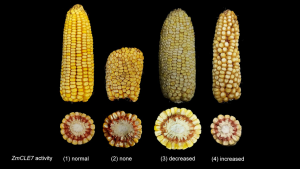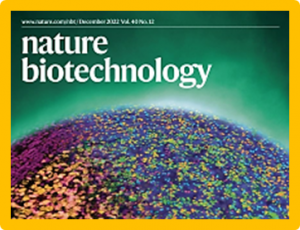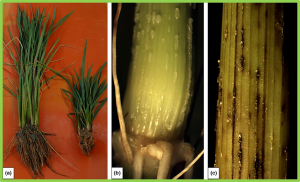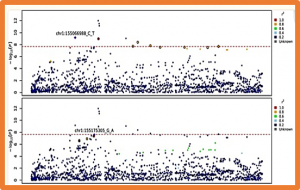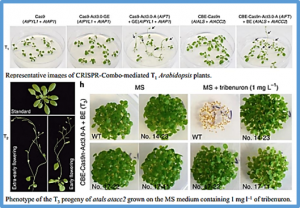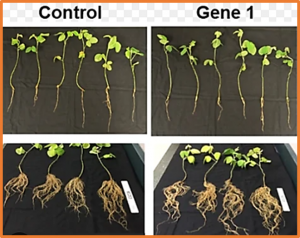This article has been retracted: please see Elsevier Policy on Article Withdrawal (https://www.elsevier.com/about/our-business/policies/article-withdrawal). This article has been retracted at the request of the Editors-in-Chief. A large part of the article is highly similar to the paper previously published by Wenqian Hou, Lei Ren, Yang Zhang, Haoyun Sun, Tianye Shi, Yulan Gu, Aimin Wang, Daifu Ma, Zongyun Li and Lei Zhang in Scientia Horticulturae 288 (2021)
Soybean mosaic, caused by the soybean mosaic virus, is the most common disease in soybean and a significant impediment to soybean production in the Huanghuai and Yangtze River regions of China. Kefeng No.1, a soybean cultivar, showed high resistance to soybean mosaic virus strain (SC1) collected from Huanghuai and Yangtze River regions. Genetic analysis based on the Mendelian genic population derived from the cross Kefeng No.1 × Nannong 1138-2 revealed that Kefeng No.1 possesses a single dominant gene.
Low efficiency is the main obstacle to using prime editing in maize (Zea mays). Recently, prime-editing efficiency was greatly improved in mammalian cells and rice (Oryza sativa) plants by engineering prime editing guide RNAs (pegRNAs), optimizing the prime editor (PE) protein, and manipulating cellular determinants of prime editing. In this study, we tested PEs optimized via these three strategies in maize.
Recent calls to establish a global project registry before releasing any gene-drive-modified organisms (GDOs) have suggested a registry could be valuable to coordinate research, collect data to monitor and evaluate potential ecological impacts, and facilitate transparent communication with community stakeholders and the general public. Here, we report the results of a multidisciplinary expert workshop on GDO registries convened on 8–9 December 2020 involving 70 participants from 14 countries.
Rice black-streaked dwarf virus disease is one of the most destructive rice viral diseases in China and East Asia. Progress has been limited in RBSDVD resistance breeding due to inadequate knowledge on the underlying functional genes. In this study, a major QTL for RBSDV (rice black-streaked dwarf virus) independent of SBPH (small brown planthopper) resistance was mapped in a 1.8 Mb interval on chromosome 6 by using an F2:3 population originated from resistant rice variety Wuke.
Downy mildew (DM) caused by the oomycete pathogen Pseudoperonospora cubensis is an important disease of cucumber and other cucurbits. Our knowledge on molecular mechanisms of DM resistance is still limited. In this study, we reported identification and functional characterization of the candidate gene for the major-effect QTL, dm5.3 for DM resistance originated from PI 197088.
Critical COVID-19 is caused by immune-mediated inflammatory lung injury. Host genetic variation influences the development of illness requiring critical care or hospitalization after infection with SARS-CoV-2. The GenOMICC (Genetics of Mortality in Critical Care) study enables the comparison of genomes from individuals who are critically ill with those of population controls to find underlying disease mechanisms. Here we use whole-genome sequencing in 7,491 critically ill individuals compared with 48,400 controls to discover and replicate 23 independent variants that significantly predispose to critical COVID-19.
Plant genome engineering has greatly benefited from the use of CRISPR-Cas9, its derived base editors, and CRISPR activation systems. However, since these systems are typically used independently, their combined potential is largely unrealized. We create a flexible CRISPR-Combo platform for simultaneous genome editing (targeted mutagenesis or base editing) and gene activation in plants here, based on a single Cas9 protein
The improvement of grapevine through biotechnology requires identification of the molecular bases of target traits by studying marker-trait associations. The Vitis18K SNP chip provides a useful genotyping tool for genome-wide marker analysis. Most linkage maps are based on single mapping populations, but an integrated map can increase marker density and show order conservation.
Variations in root system architecture (RSA) affect the functions of roots and thus play vital roles in plant adaptations and agricultural productivity. The aim of this study was to unravel the genetic relationship between RSA traits and shoot-related traits in soybean. This study characterized RSA variability at seedling stage in a recombinant inbred population, derived from a cross between cultivated soybean C08 and wild soybean W05, and performed high-resolution quantitative trait locus (QTL) mapping


 Curently online :
Curently online :
 Total visitors :
Total visitors :


